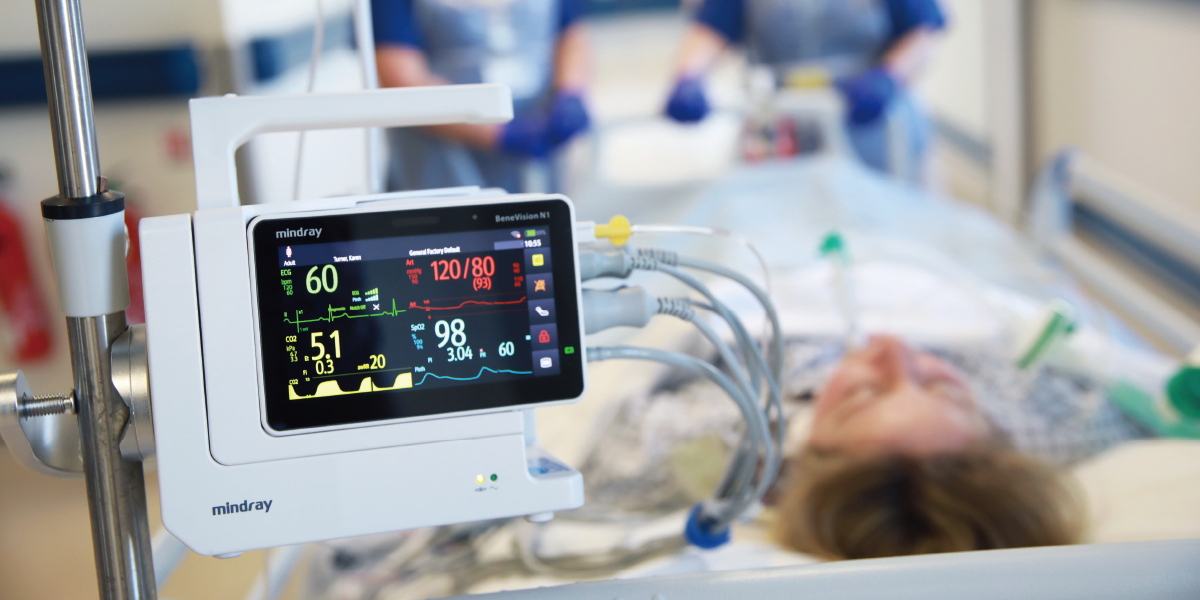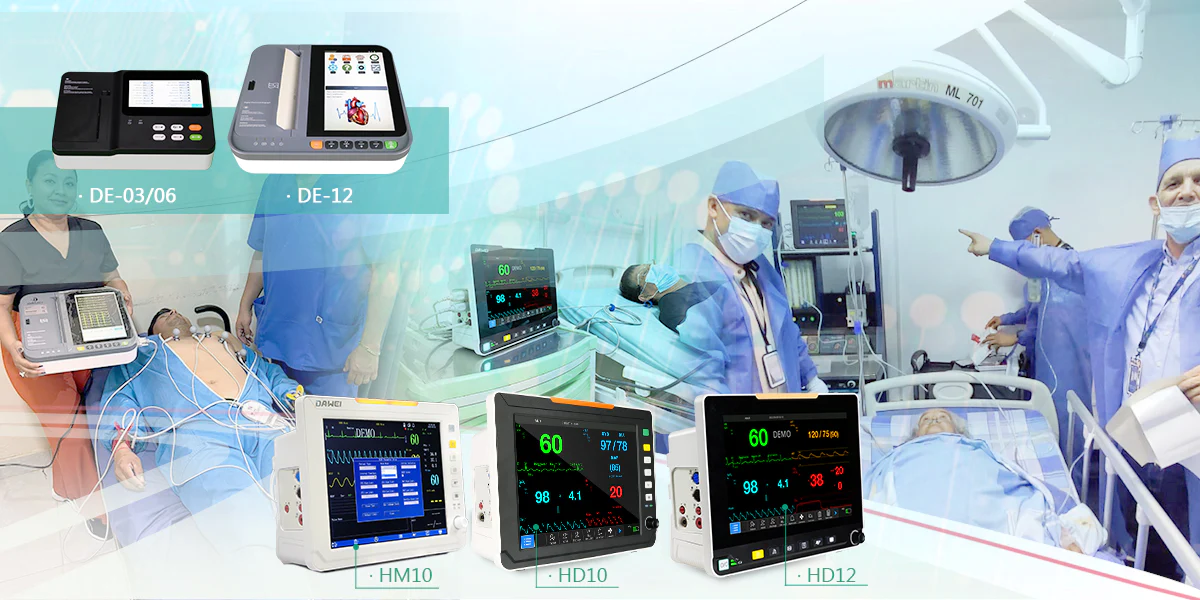In the ever-evolving landscape of healthcare, patient monitors stand as silent guardians, providing real-time insights into a patient’s vital signs and overall physiological condition. These sophisticated devices have become integral components of modern healthcare, facilitating continuous monitoring and early detection of changes that could signal potential health risks. In this article, we will delve into the world of patient monitors, exploring their evolution, functionality, diverse applications, and the transformative impact they have on patient care.
The Evolution of Patient Monitors
The concept of patient monitoring has ancient roots, with healthcare practitioners historically relying on basic observations and manual assessments of a patient’s vital signs. The development of electronic patient monitors gained momentum in the mid-20th century, marking a significant shift toward more comprehensive and accurate health assessments.
The early patient monitors primarily focused on monitoring vital signs such as heart rate, respiratory rate, and blood pressure. Over time, technological advancements have expanded the capabilities of patient monitors to include continuous monitoring of various physiological parameters, enabling healthcare providers to obtain a comprehensive picture of a patient’s condition.
Functionality of Patient Monitors
Patient monitors are sophisticated electronic devices designed to track and display a range of physiological parameters. The key components of a patient monitor include:
- Sensors and Transducers: These devices are responsible for capturing physiological data from the patient. Common sensors include electrodes for monitoring electrocardiography (ECG or EKG), probes for measuring oxygen saturation (SpO2), and cuffs for blood pressure monitoring.
- Central Processing Unit (CPU): The CPU processes the data collected by sensors, interprets it, and displays the information on the monitor in a comprehensible format. Advanced patient monitors may also feature built-in algorithms for real-time analysis and early detection of abnormalities.
- Display Unit: The monitor displays real-time information about a patient’s vital signs, including heart rate, respiratory rate, blood pressure, temperature, and more. The display provides healthcare professionals with immediate access to critical information.
- Alarms: Patient monitors are equipped with alarms that notify healthcare providers of any deviations from normal physiological parameters. Alarms can alert clinicians to potential issues, allowing for prompt intervention.
Applications of Patient Monitors
- Critical Care Monitoring: Patient monitors play a crucial role in critical care settings, such as intensive care units (ICUs) and emergency departments. Continuous monitoring of vital signs helps healthcare professionals detect changes in a patient’s condition promptly.
- Surgical Monitoring: Patient monitors are used during surgical procedures to track vital signs and ensure the patient’s stability throughout the operation. This real-time information assists surgeons and anesthesiologists in making informed decisions during surgery.
- Postoperative Care: After surgery, patient monitors aid in the recovery process by providing ongoing assessments of vital signs. Monitoring ensures that any postoperative complications are identified and addressed promptly.
- Maternal-Fetal Monitoring: In obstetrics, patient monitors are employed for maternal-fetal monitoring during labor and delivery. These monitors track the mother’s vital signs and the baby’s heart rate to ensure a safe delivery.
- Telemetry Monitoring: Patient monitors with telemetry capabilities allow for remote monitoring of patients, enabling healthcare professionals to keep track of vital signs even when the patient is not physically present in the same location as the monitor. This is particularly valuable for ambulatory and home care settings.
Technological Advancements in Patient Monitors
The field of patient monitoring has witnessed remarkable technological advancements, enhancing the capabilities and utility of patient monitors. Some notable innovations include:

- Wireless Connectivity: Many modern patient monitors are equipped with wireless capabilities, allowing for seamless integration with electronic health record (EHR) systems. Wireless connectivity facilitates data sharing, remote monitoring, and real-time collaboration among healthcare providers.
- Multi-Parameter Monitoring: Advanced patient monitors can simultaneously track multiple physiological parameters, providing a more comprehensive view of a patient’s health. This includes monitoring of ECG, SpO2, blood pressure, temperature, and capnography.
- Smart Alarms and Early Warning Systems: Patient monitors are incorporating smart alarm systems and early warning algorithms. These technologies help reduce alarm fatigue by providing more contextually relevant alerts, ensuring that healthcare providers are alerted to clinically significant changes in a patient’s condition.
- Integration with Telemedicine: The integration of patient monitors with telemedicine platforms enables remote patient monitoring, allowing healthcare providers to monitor patients from a distance. This is especially valuable for managing chronic conditions and postoperative care.
- Artificial Intelligence (AI) and Machine Learning: AI algorithms are being applied to patient monitoring data for predictive analytics and early detection of deteriorating patient conditions. Machine learning algorithms can analyze vast amounts of data to identify patterns and trends that may indicate potential health risks.
Challenges and Considerations
While patient monitors have revolutionized healthcare by providing valuable insights and facilitating timely interventions, certain challenges and considerations should be acknowledged:
- Alarm Fatigue: The frequent activation of alarms, especially in high-acuity settings, can lead to alarm fatigue among healthcare providers. Addressing alarm fatigue involves optimizing alarm settings, implementing smart alarm technologies, and providing adequate training.
- Standardization of Monitoring Protocols: Standardizing monitoring protocols across healthcare settings is essential to ensure consistency in patient care. Protocols for the use of patient monitors should be evidence-based and regularly updated to reflect best practices.
- Data Security and Privacy: With the increasing use of wireless connectivity and integration with electronic health records, ensuring the security and privacy of patient monitoring data is paramount. Healthcare institutions must implement robust cybersecurity measures to safeguard patient information.
- Training and Competency: Healthcare professionals using patient monitors must receive comprehensive training to ensure proper utilization of the technology. Competency assessments and ongoing education are vital to maintaining proficiency in monitoring practices.
Conclusion
Patient monitors have emerged as indispensable tools in contemporary healthcare, providing a continuous stream of vital information that guides clinical decision-making and improves patient outcomes. From their humble beginnings as devices monitoring basic vital signs to today’s sophisticated, technologically advanced systems, patient monitors have played a transformative role in patient care across various healthcare settings.
As technology continues to evolve, patient monitors are poised to become even more integrated, intelligent, and patient-centric. The ongoing collaboration between healthcare professionals, engineers, and technologists ensures that patient monitors will remain at the forefront of diagnostic and monitoring capabilities, contributing to the ever-advancing landscape of modern medicine. In the journey to enhance patient outcomes and optimize healthcare delivery, patient monitors stand as steadfast companions, providing a watchful eye and valuable insights into the complex tapestry of human health.
Tags: Patient Monitors
